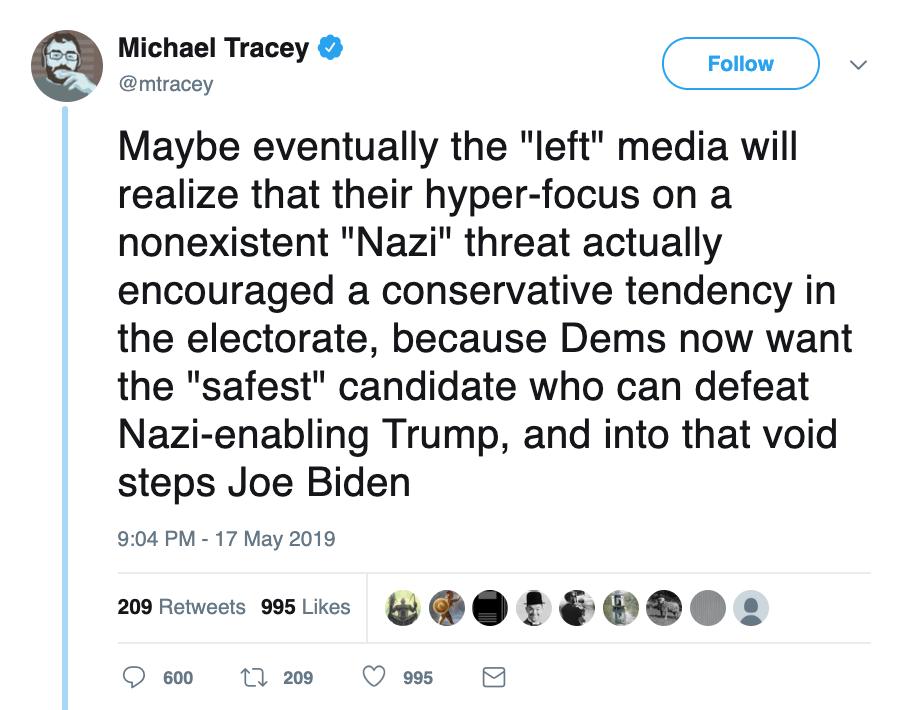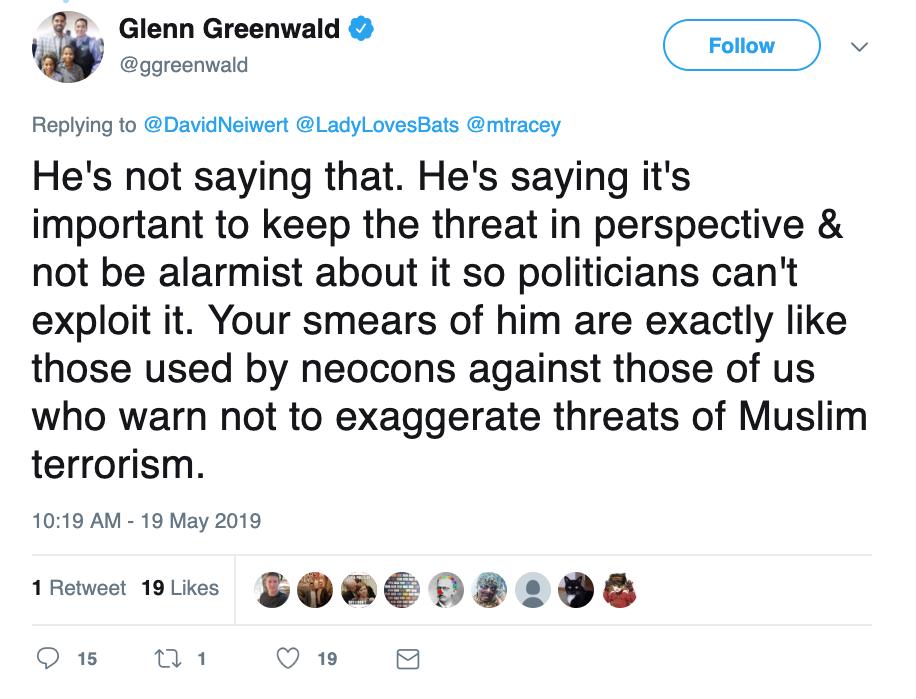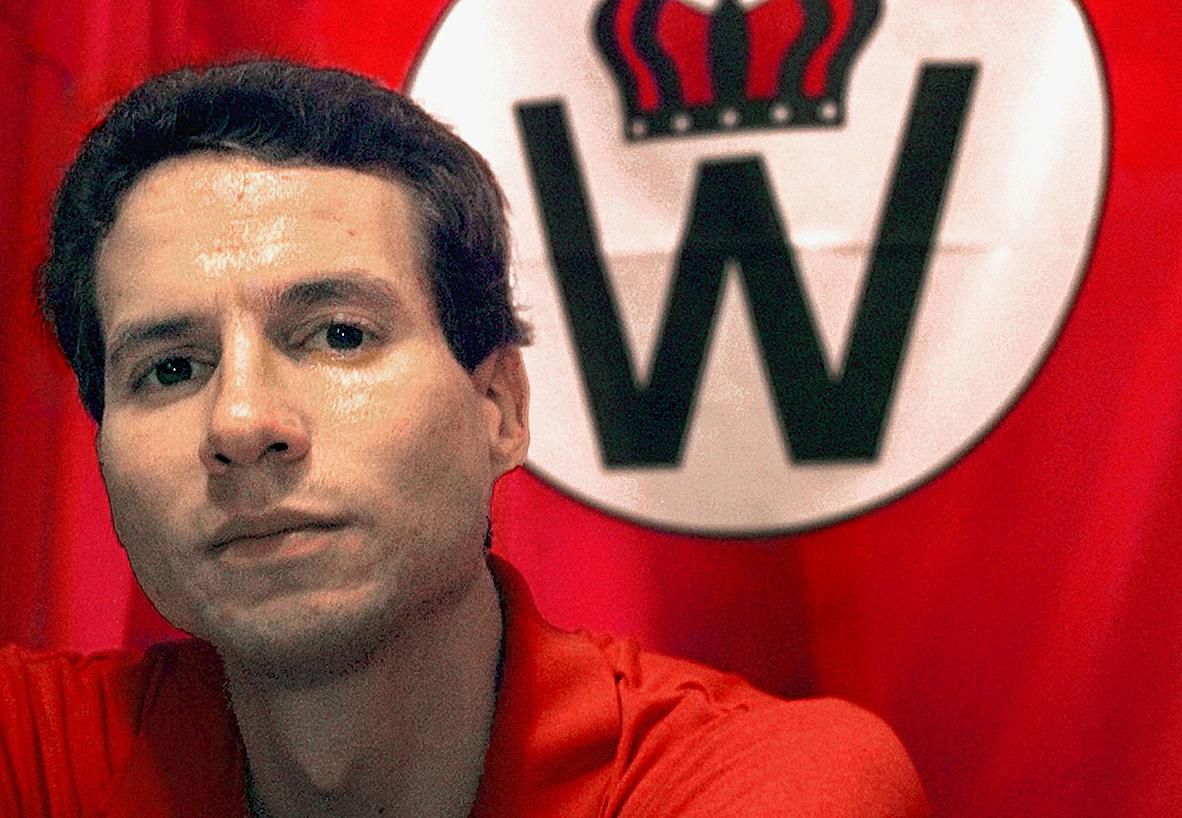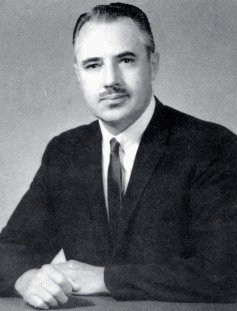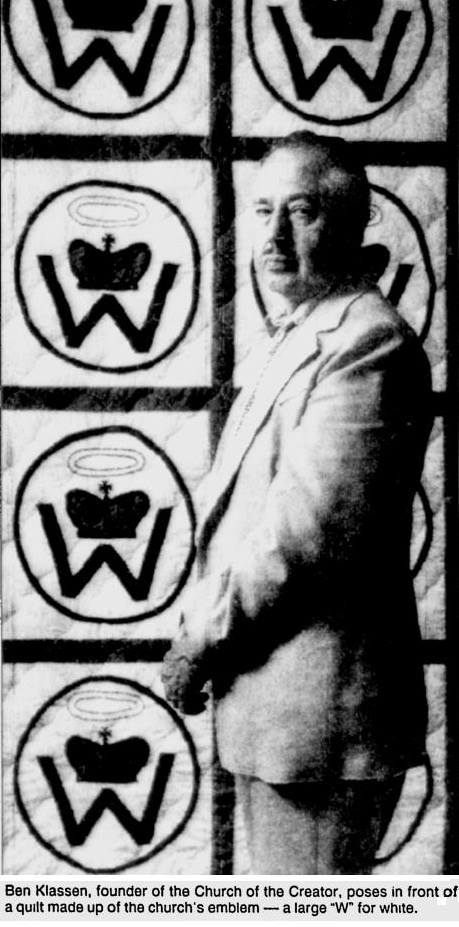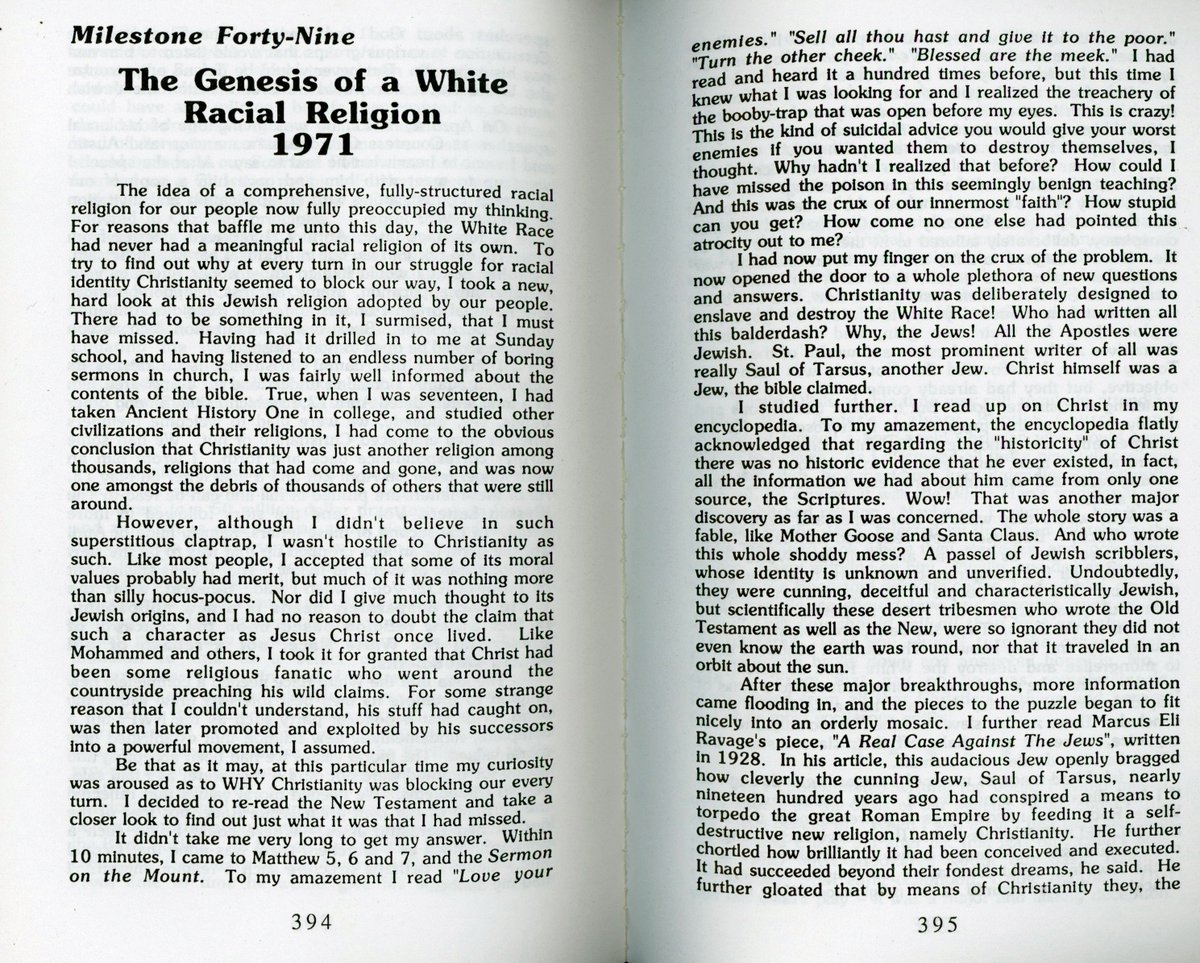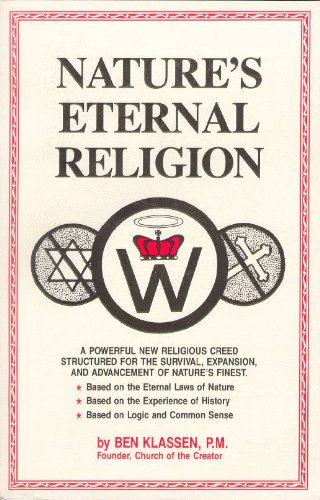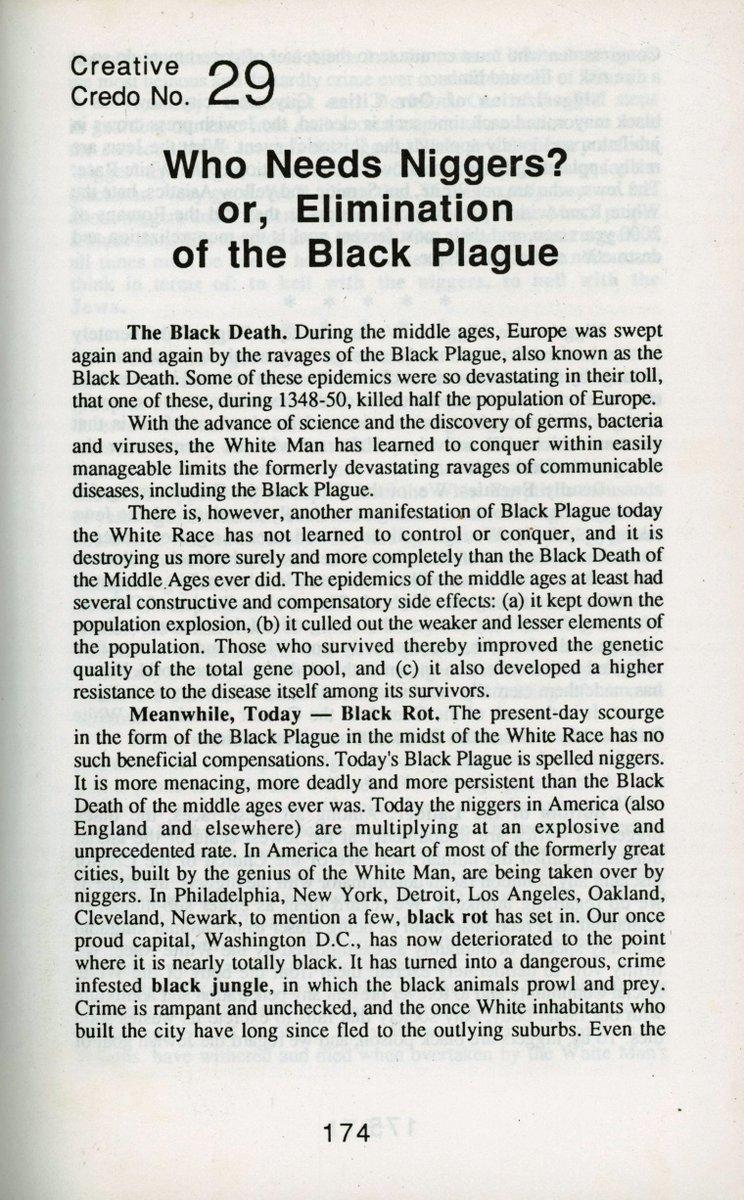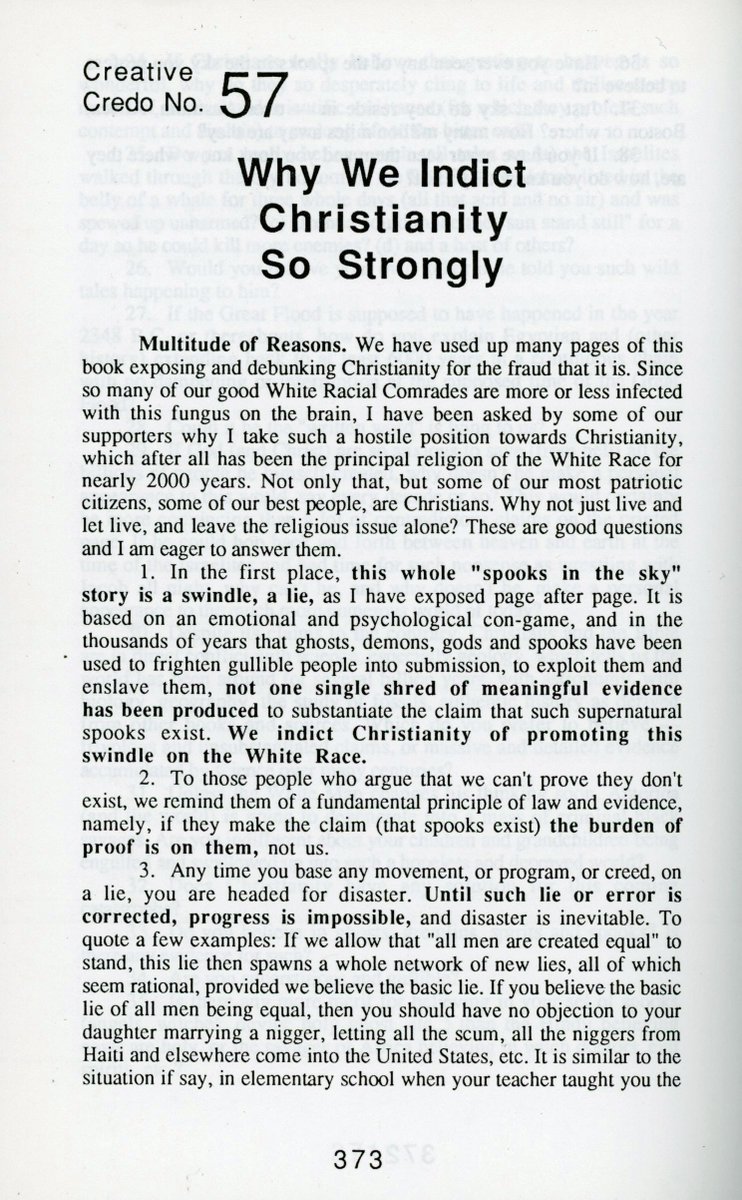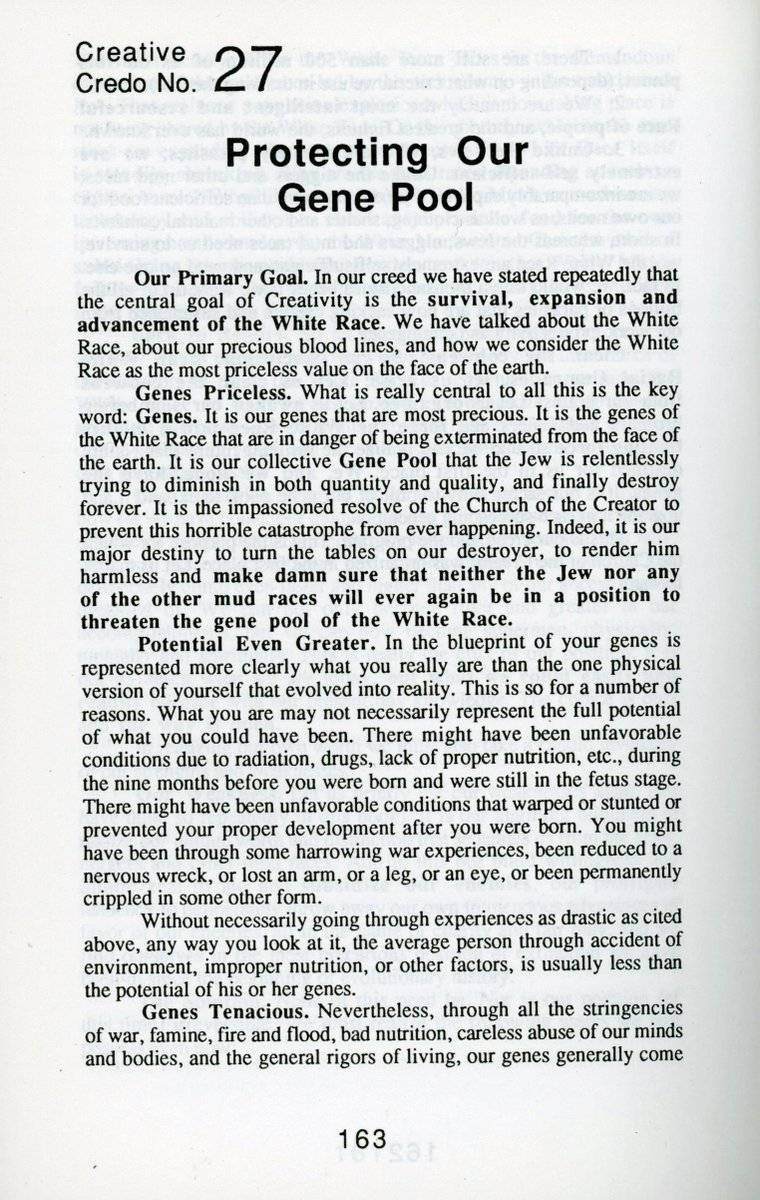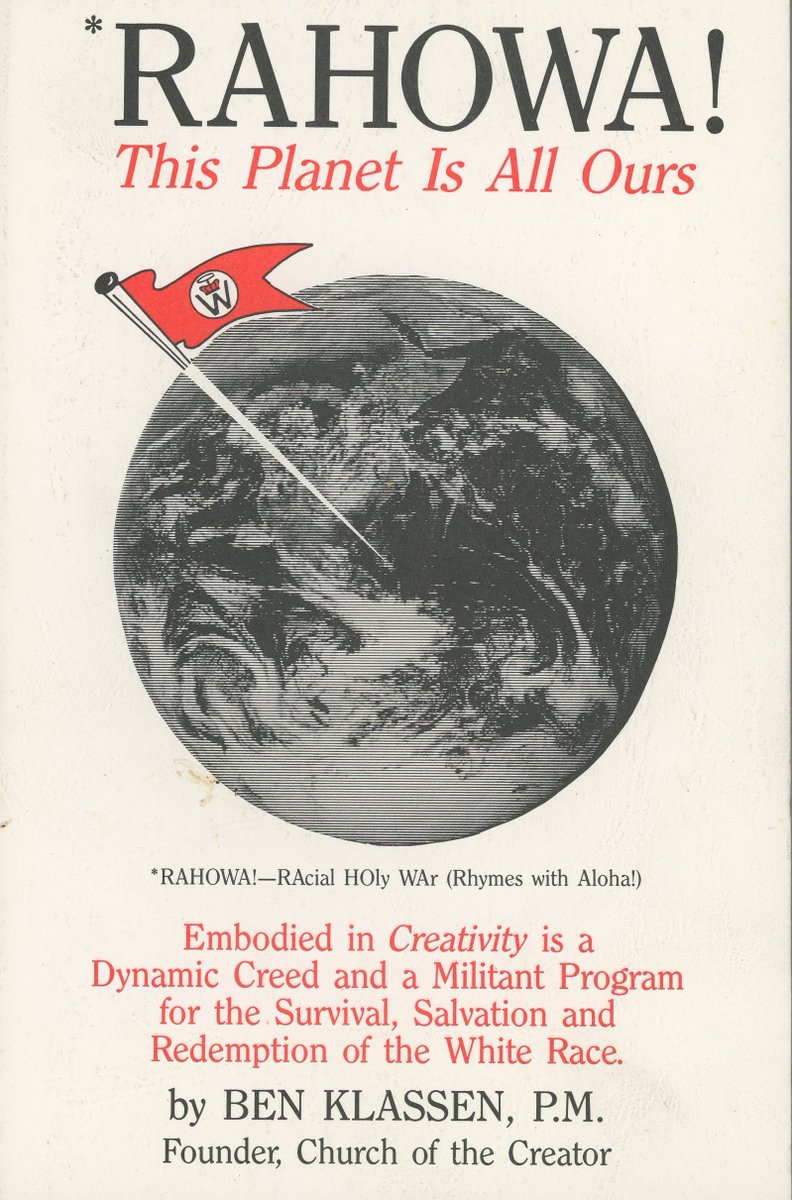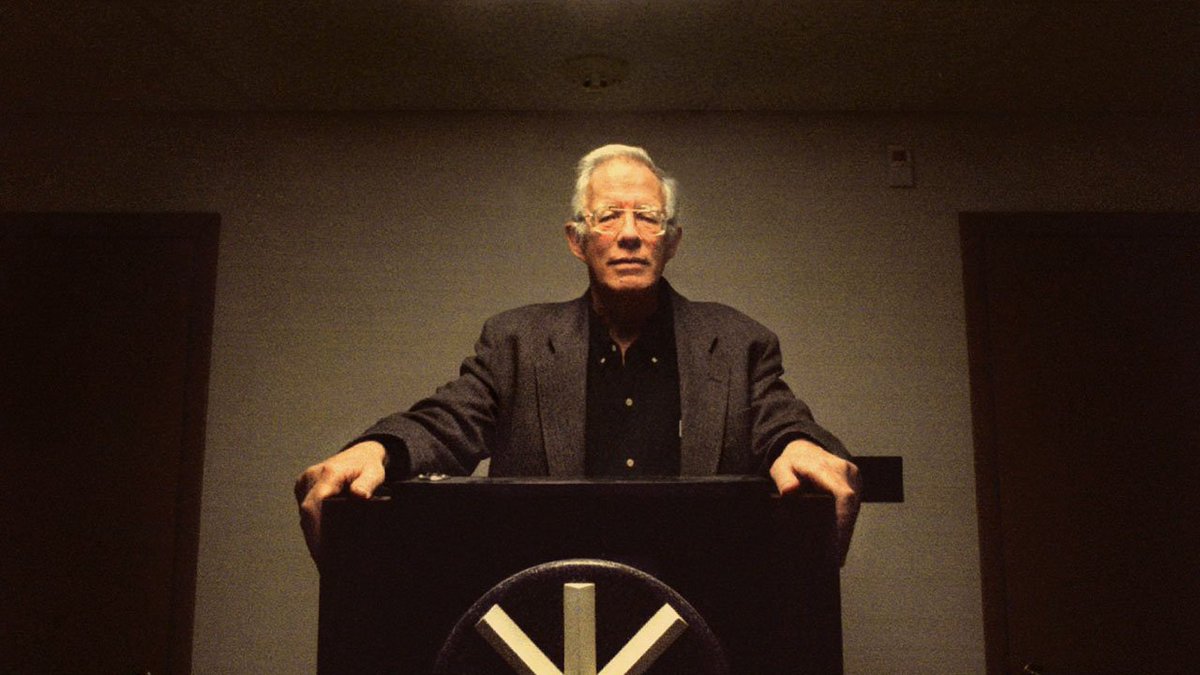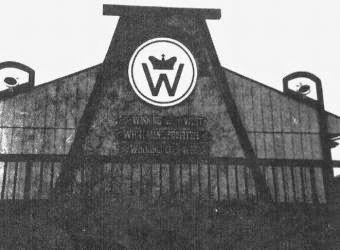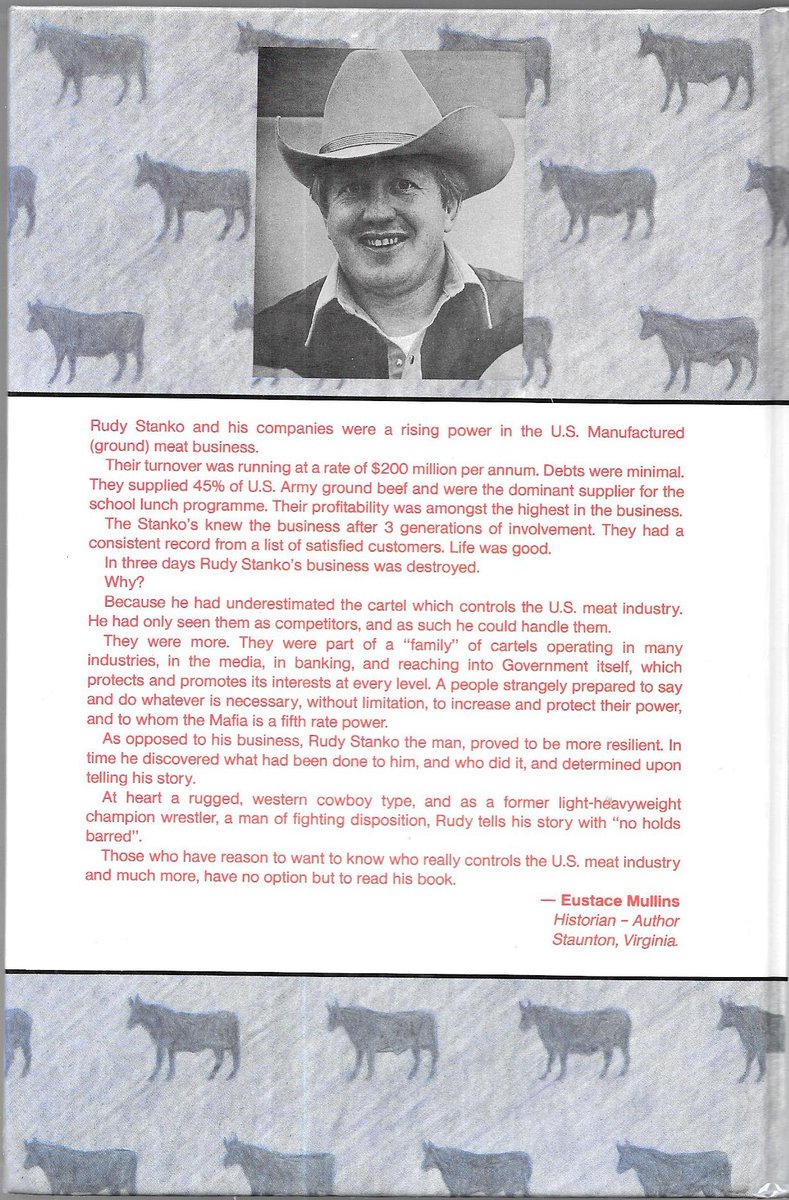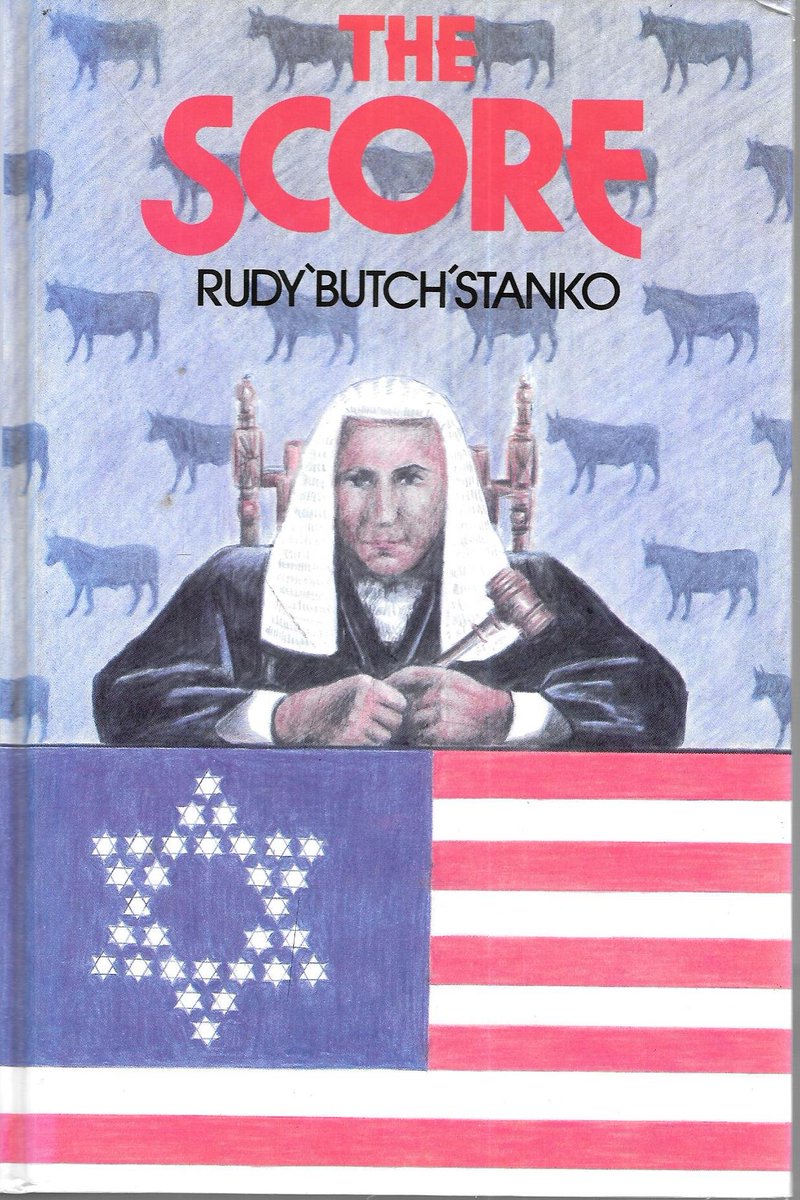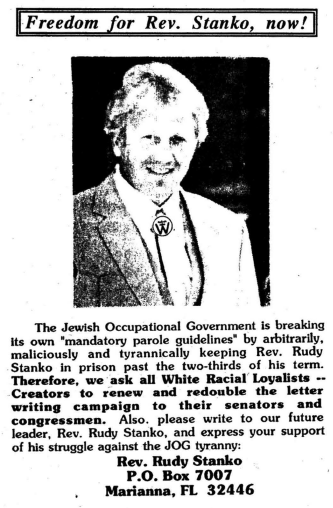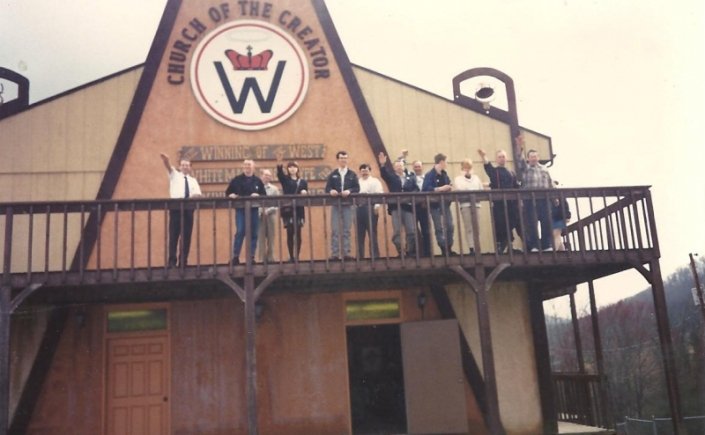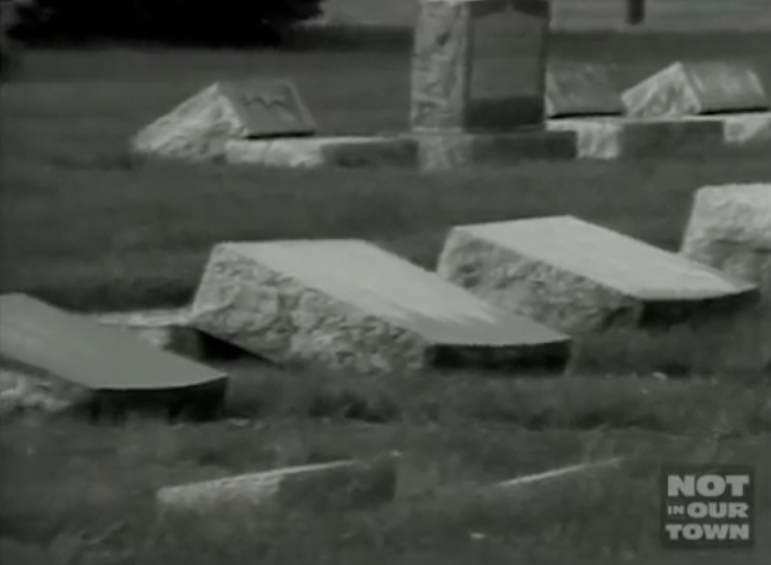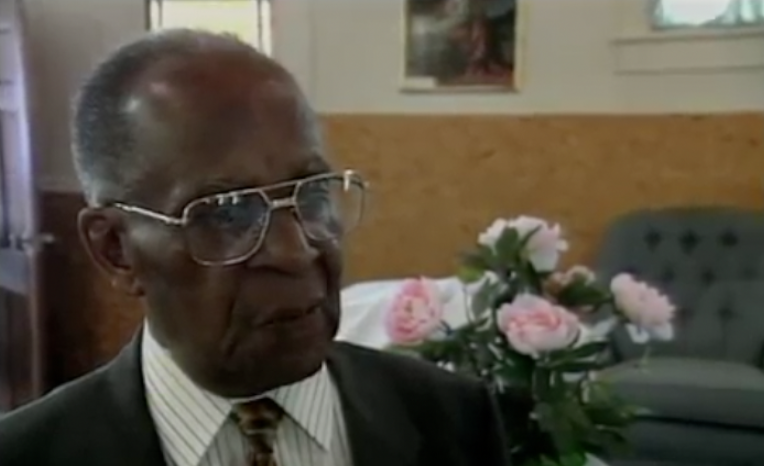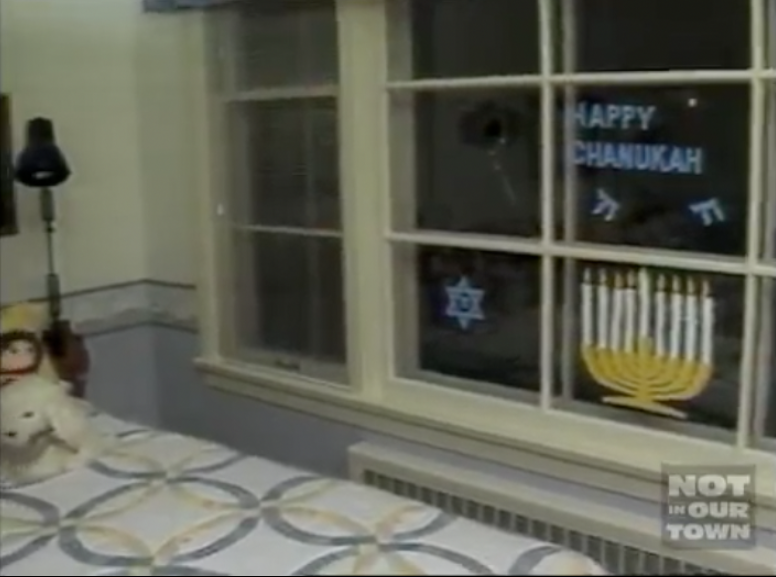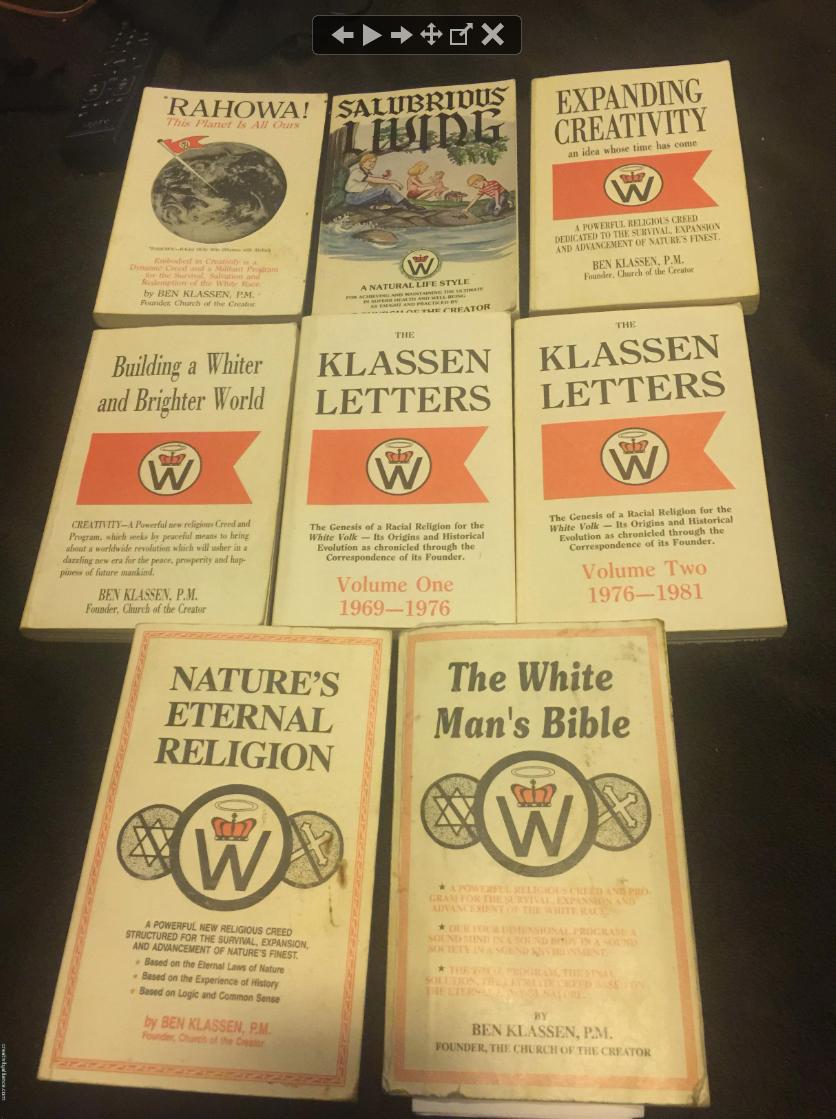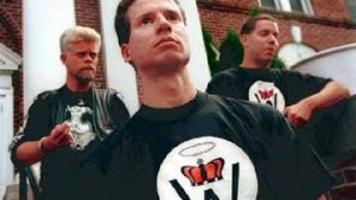1) So now we have self-described “progressives” like @ggreenwald and @mtracey telling us that the threat of white nationalism in the USA is “nonexistent” (as Tracey put it), and when called out for that GG chimes in and claims that we “needs be keep the threat in perspective.”
2) This is of course, classic Greenwald. The unfortunate truth is that this would-be icon of progressive politics in fact has a long history of minimizing, apologizing for, and empowering white supremacists, then wrapping himself in a self-righteous Free Speech blanket.
3) Gather ‘round, kids, while I replay for you the tale of the little Pontifex Maximus and his lawyer. Better settle in, because it’s a massive, 100-plus-tweet thread. But worth it.
4) It all kind of begins in 1956, when a man named Ben Klassen invented an early version of an electric can opener and patented the device. Klassen was a tinkerer who had made a killing in real estate; he was a cofounder of Silver Springs, NV, and had walked away with a bundle.
5) Klassen’s invention was a wall-mounted design, and he made another bundle off his patent for the first few years, mostly in industrial use. However, other designs that were cheaper, more portable and applicable to household appliances came along. By 1962 he had closed shop.
6) Having made a couple of small fortunes, Klassen decided to become a politician. A longtime member of the John Birch Society, he ran for the Florida House from his home in Broward County 1966 and won on an anti-busing, anti-government platform. He only served one term.
7) Klassen also headed up a local group supporting George Wallace’s presidential candidacy. After losing his seat in 1968, Klassen decided the Republicans and Democrats were too corrupted by Jews and founded his own party, the Nationalist White Party, in 1970.
8) The NWP was aimed at recruiting white Christians: “We believe that the White Race was created in the Image of the Lord...” was No. 1 on the party’s official 14-point program. But it fell apart quickly when Klassen began expressing doubts about Christianity.
9) His main concern (elucidated at length in later works) was that Jesus was a Jew and the entire Christian faith was thus the tainted offspring of Judaism. Klassen regarded the Jews as children of Satan and believed no worthwhile religion could come from them.
10) So he decided to found an entirely new religion, separate from Christianity and Judaism, predicated essentially on the worship of whiteness. He called it Creativity, and his organization the Church of the Creator.
11) Klassen’s first book, _Nature’s Eternal Religion_, explains the theology (such as it is) in detail: White people are the obvious cream of God’s creation, and as such should be held as the repositories of God’s Will, the holders of all religious, political and economic power.
12) It’s also incredibly crude and vile, essentially third-grade-level racism expressed with sixth-grade-level intelligence. Klassen insisted on the use of degrading stereotypes and epithets regarding all nonwhites and Jews. He reveled in it.
13) Klassen moved to rural North Carolina and set up his church operations near the rural town of Otto in 1982. He continued to churn out texts, notably “The White Man’s Bible” – a sort of refined version of the earlier texts – and an autobiography, “Against the Evil Tide.”
14) Here are some more prime pages from these texts. As I said, this is some of the most vile and hate-filled white supremacist propaganda you’ll find anywhere. The David Dukes and Richard Spencers are sagacious compared to Klassen.
15) Klassen’s one major contribution to white supremacism was coining the war cry “RaHoWa!”, which is a shortened version of his core credo, “Racial Holy War.”
16) The Church of the Creator didn’t attract a large following, but those who did join were fairly predictable as far as white-supremacist groups go: Vicious, violent, thuggish, and not terribly bright.
17) If anything, they seemed to attract a particularly cretinous stripe of hater, many of them criminals. Over the years they collected a very extensive track record. https://www.adl.org/news/article/the-creativity-movement-chronology-of-crime">https://www.adl.org/news/arti...
18) One particular case brought real strife to Klassen: the 1991 shooting of a black man in Florida named Harold Mansfield by a Church of the Creator acolyte named George Loeb. The victim’s family took Klassen to court. u2028u2028 https://www.apnews.com/dc459cbdedacf2622b4e9b6e7cd76dbb">https://www.apnews.com/dc459cbde...
19) Fearing the lawsuit might result in him having to hand over his church and property to a black family, Klassen in 1992 sold it at a steep discount to William Pierce, leader of the infamous National Alliance hate group and author of _The Turner Diaries._
20) Klassen by now was rather elderly, and there was already a scramble within the COTC membership for church leadership after his departure from the role of Pontifex Maximus. In 1990, Klassen had announced he would turn the job over to one Rev. Rudy Stanko.
21) Based in Billings, Montana, Stanko was a “deacon” in COTC. He was a former cattleman who had been sent to prison for selling tainted meat to Montana schoolchildren. It was during that prison stint that he was converted to the faith, such as it was.
22) Upon his release, Stanko returned to Billings in the late ‘80s and began proselytizing on behalf of the COTC and formed a relatively active “church” there. He also penned a book titled “The Score,” an anti-Semitic screed that blamed Jews for his imprisonment.
23) Klassen adopted Stanko’s cause and promoted his work at the Creativity newsletter. Eventually, this led to Klassen anointing him his successor.
24) Stanko, however, let his imminent Maximushood go to his head. Before the change had been made official, he began announcing his plans to move the church headquarters out to Montana. This did not sit well with Klassen, who wanted to keep the church in the South.
25) So Klassen cancelled Stanko’s ceremonial anointment announced that he was changing the successorship, handing the title of next Pontifex Maximus to a pizza delivery man from Baltimore named Charles Altvater, who was later arrested for attempting to firebomb a cop’s car.
26) Klassen by then had already changed his mind again, and instead named a Milwaukee man named Mark Wilson as the successor. That lasted a few months before finally settling on a man named Rick McCarty. Upon being named leader, he moved COTC back to Florida.
27) Church members were continuing to commit violent hate crimes, in ways indicating its spread nationally. In the Pacific Northwest, a couple of young COTC members bombed NAACP offices in Tacoma and a Seattle gay bar in July 1993.
http://community.seattletimes.nwsource.com/archive/?date=19930805&slug=1714511">https://community.seattletimes.nwsource.com/archive/...
http://community.seattletimes.nwsource.com/archive/?date=19930805&slug=1714511">https://community.seattletimes.nwsource.com/archive/...
28) Two more COTC members, Geremy von Rineman and his girlfriend Jill Scarborough, were part of a group of neo-Nazis charged in Los Angeles in plotting to bomb the city’s largest black church, also in July 1993.u2028
https://www.nytimes.com/1993/07/17/us/authorities-cite-links-of-plotters-to-hate-groups.html">https://www.nytimes.com/1993/07/1...
https://www.nytimes.com/1993/07/17/us/authorities-cite-links-of-plotters-to-hate-groups.html">https://www.nytimes.com/1993/07/1...
29) Apparently depressed by his wife’s recent death from cancer, and the looming likelihood that his church was about to be sued out of existence by the SPLC, working with the victims of COTC hate crimes, Klassen committed suicide on Aug. 7, 1993, with sleeping pills.
30) His worst fears shortly came true. Representing the family of Harold Mansfield, George Loeb’s victim, the SPLC took Rick McCarty and COTC to court in 1994 and won handily, with McCarty not contesting. It won a $1 million judgment and seized all of its assets.
31) Seizing the opportunity, a 20-year-old white supremacist from Peoria, Ill., named Matthew Hale announced he was dissolving the organization he headed, the National Socialist White Americans Party, and reforming it as a religion: the World Church of the Creator.
32) The remaining Creativity true believers all quickly lined up behind him. This included Rudy Stanko, who still had a fairly active Creativity church group spread throughout Montana. He also had come into possession of most of the stock of Klassen’s library of books.
33) This is when I became more familiar with the “Creativity” religion, due mainly to the recurring criminality emanating from its ranks in the Pacific Northwest, and in Montana particularly.
34) Stanko’s little congregation of haters, true to form, had been committing hate crimes in the Billings area: Defacing a Native American home, entering a black church during worship and threatening congregants, knocking over markers in a Jewish cemetery.
35) Things came to a head around the holidays in 1993, when someone threw a rock through the window of a 6-year-old Billings boy who had placed a Menorah in his window. The faith community, outraged, organized a public response in which everyone in town put Menorahs up.
36) The response led to a PBS documentary titled “Not In Our Town,” the making of which itself led to the formation of a national organization with that name, devoted to enabling communities to stand up to hate groups and their toxic effects. They do great work to this day.
37) Stanko’s group became more muted in their activities, though they were known for going around and leaving copies of Klassen’s vile books on people’s doorsteps, apparently as a kind of proselytizing. The Montana Human Rights Network collected most of these.
38) Even though his operations were based in Illinois, the WCOTC held its annual national convention in the western Montana town of Superior every year, likely due to the prevalence of Montanans in the church’s membership. Matt Hale appeared to enjoy the annual trips.
https://missoulian.com/uncategorized/supremacist-has-lots-to-say-but-few-to-hear/article_0c0bd2fd-44ec-585c-9a83-a3a2fe4b6922.html">https://missoulian.com/uncategor...
39) Back in Illinois, Hale had gone to law school at Southern Illinois, obtained a degree and passed the bar, intent on using it on behalf of his ‘religion.’ However, a special panel of the Illinois bar refused to admit him or issue a license. He sued.u2028u2028 https://www.nytimes.com/1999/02/10/us/racist-barred-from-practicing-law-free-speech-issues-raised.html">https://www.nytimes.com/1999/02/1...

 Read on Twitter
Read on Twitter